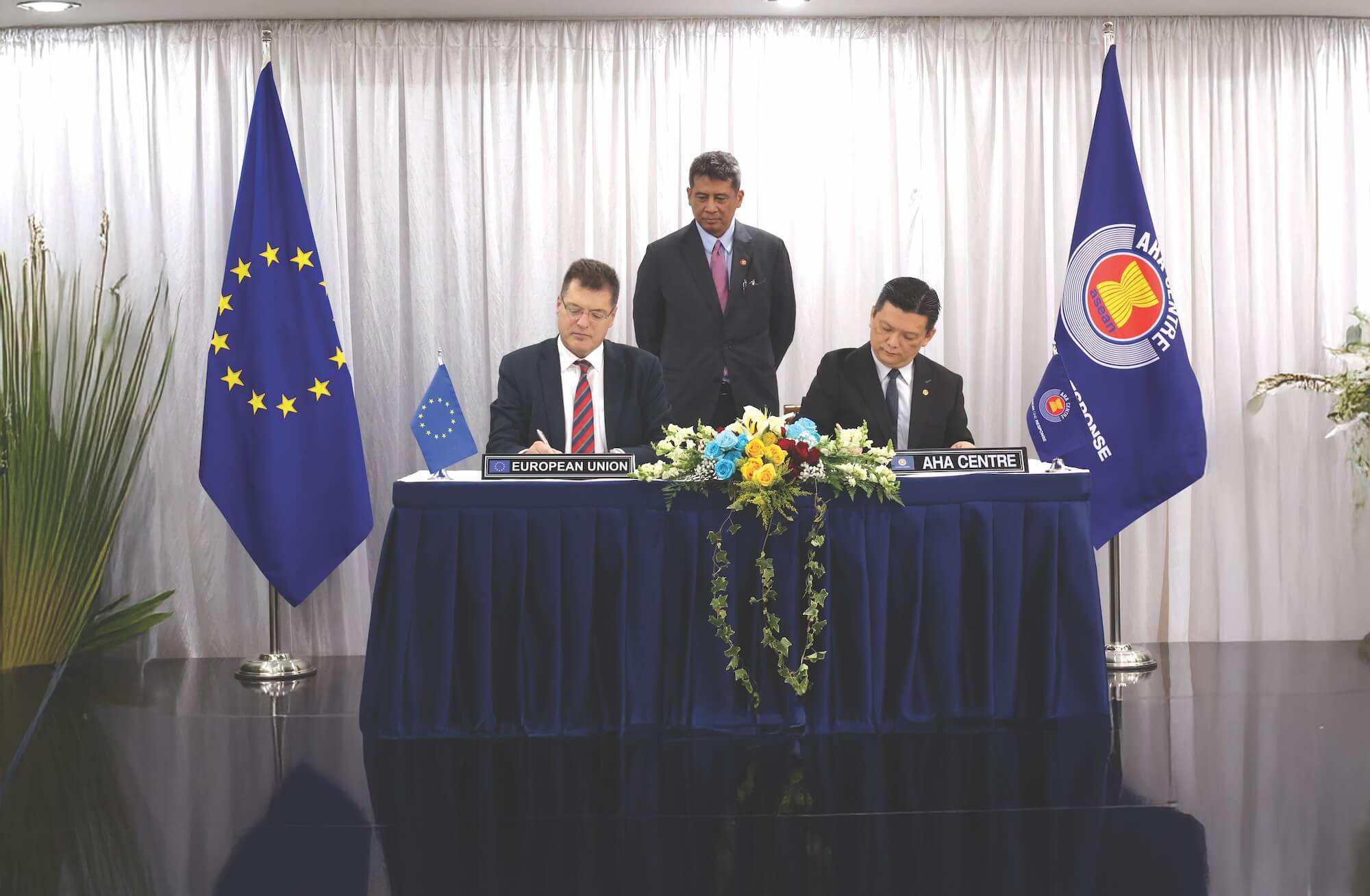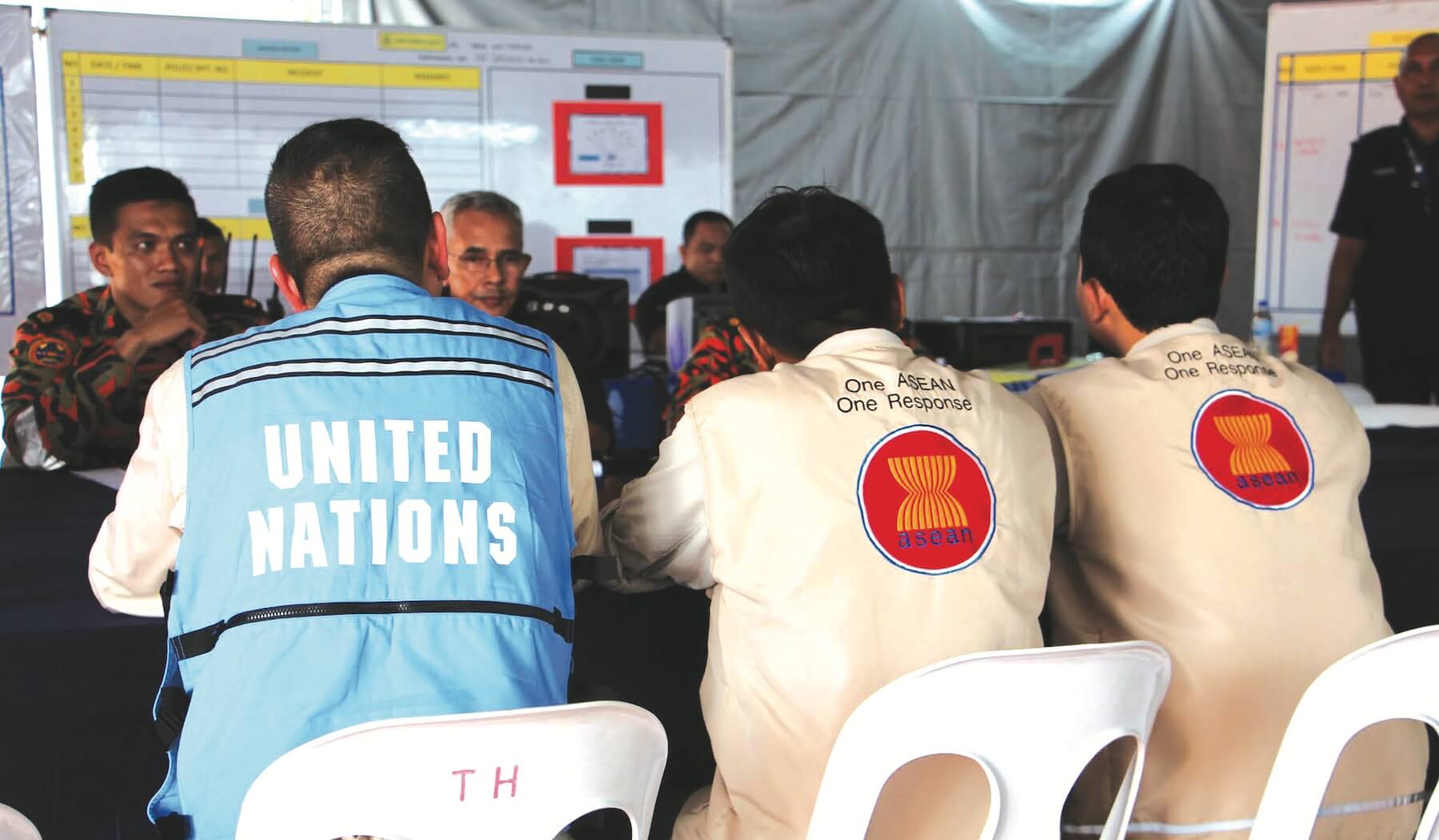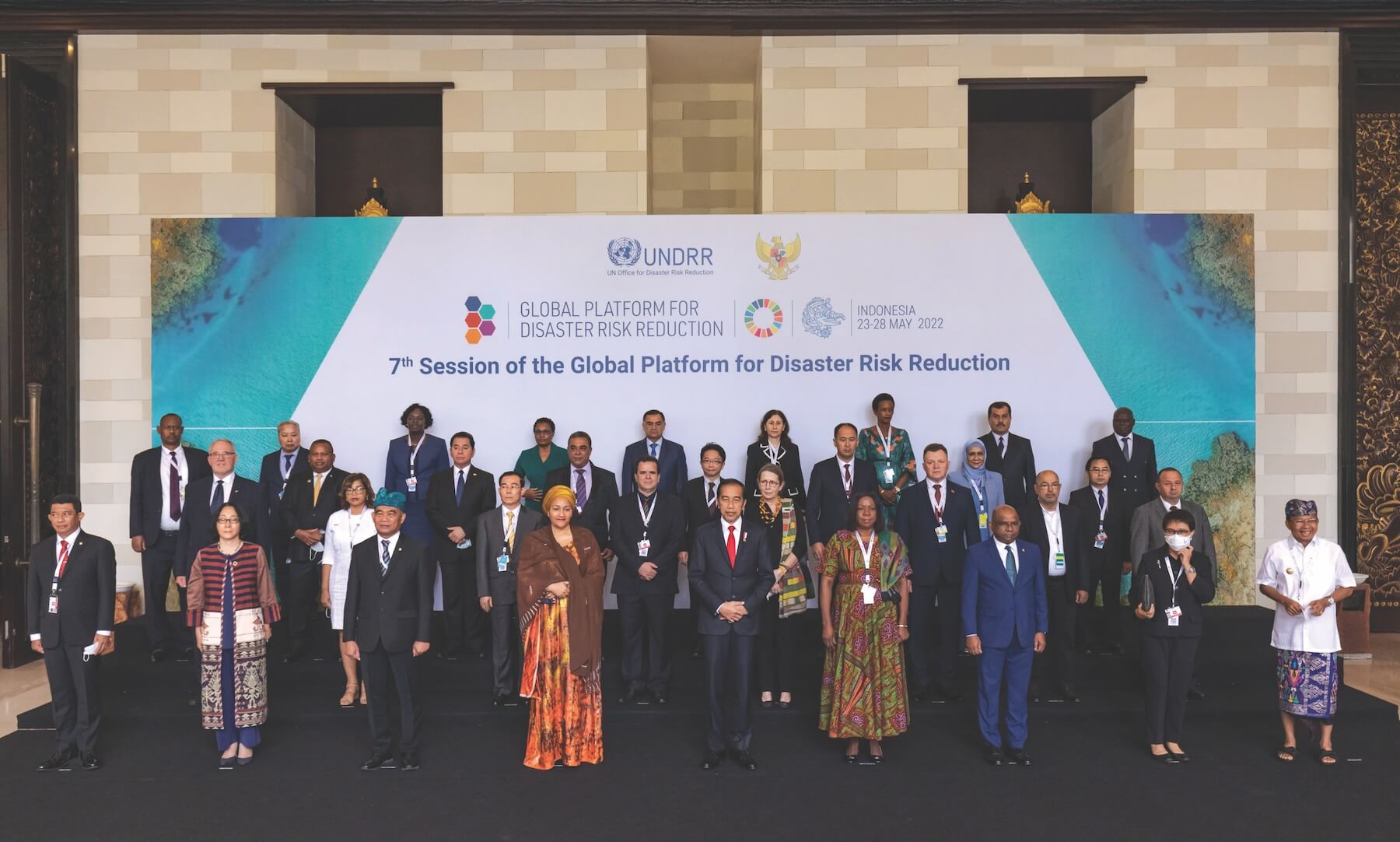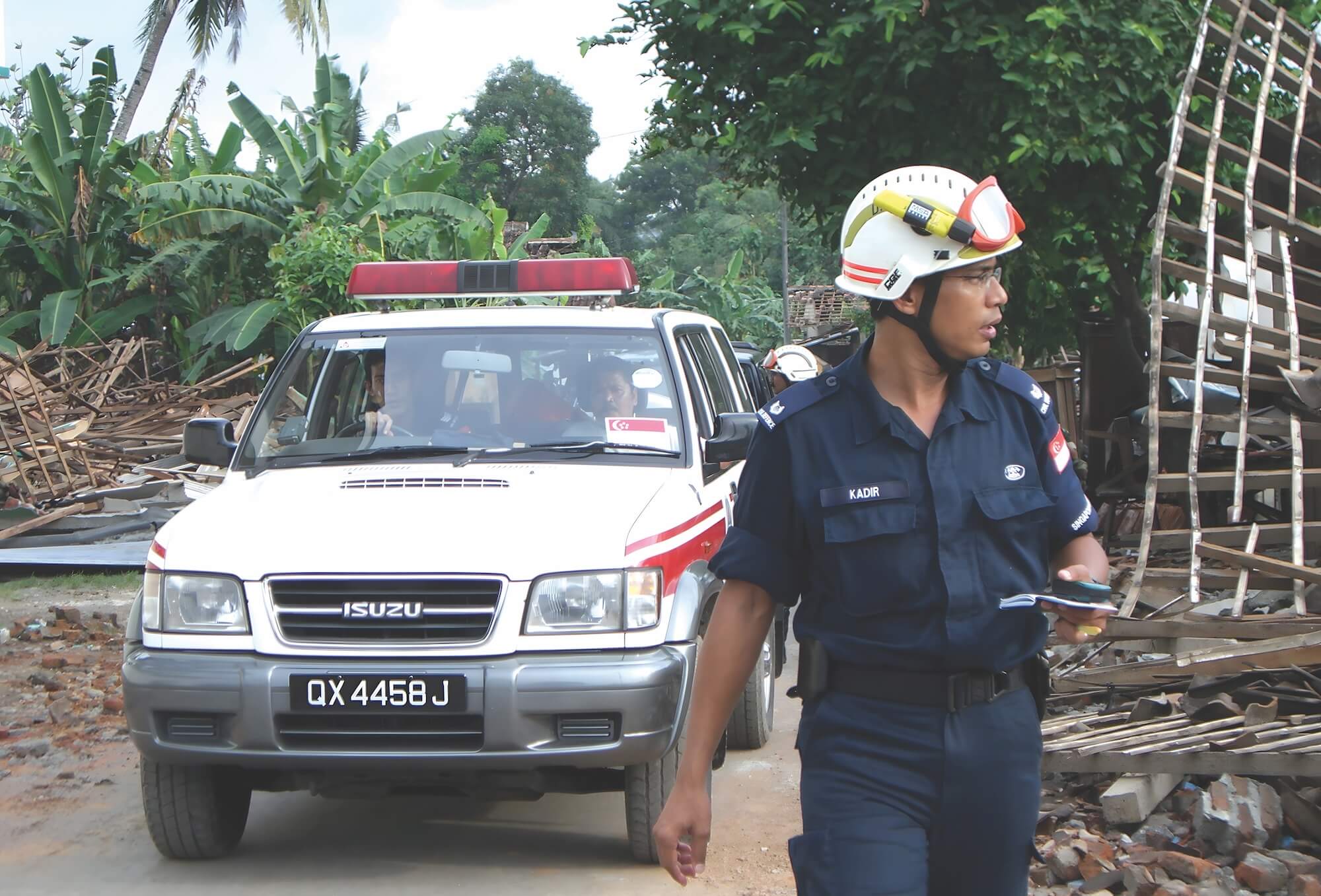
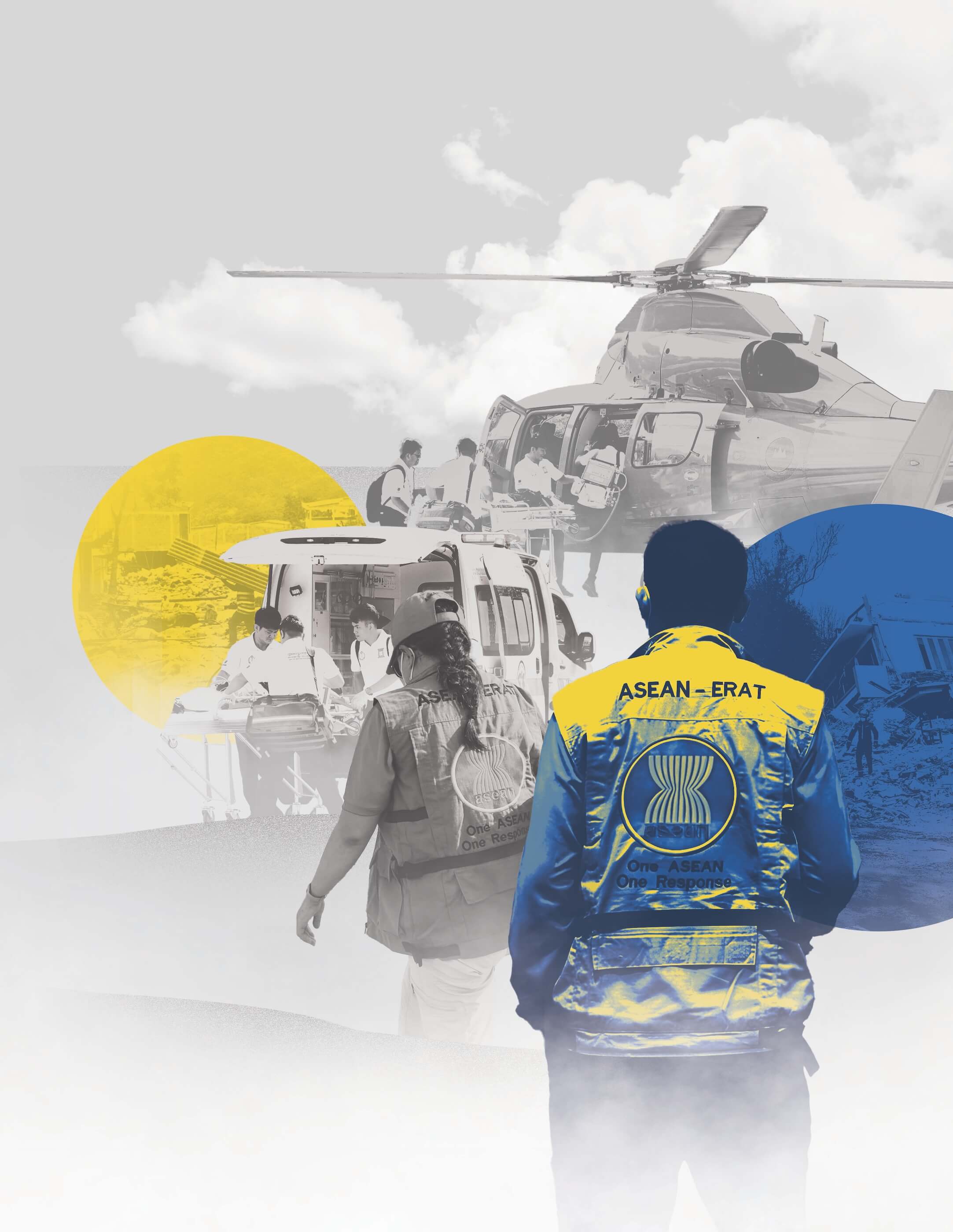



Located in the Pacific Ring of Fire, ASEAN is the most disaster-prone region in the world. In just mid-2025, ASEAN has faced close to 2,000 disasters, which have affected 45.6 million persons and displaced 2.1 million persons. Some 6,000 lives were lost, and damages amounted to 5.2 billion US dollars. Singapore, despite its size, contributes actively to advancing ASEAN’s disaster management capabilities and capacity. Through its strategic leadership, substantial contributions and strong operational readiness, the Singapore Civil Defence Force (SCDF) stands ready to serve as a valued member of the ASEAN Committee on Disaster Management (ACDM) and strives to enhance regional cooperation in all aspects of disaster management.
Contributions to regional ASEAN mechanisms: AADMER, establishment of the AHA Centre, and the ASEAN-ERAT
Since the early days when the idea of the ASEAN Agreement on Disaster Management and Emergency Response (AADMER) was mooted, Singapore has played a key role in the establishment of regional disaster management mechanisms. The SCDF, as Singapore’s national focal point for disaster management, holds the reputation as a leading disaster management and emergency response organisation within ASEAN. Mr. Kadir Maideen, an SCDF officer who has since retired, was seconded to the ASEAN Secretariat to work on the development of the AADMER.
To support the implementation of AADMER, there was a need to identify concrete actions and activities to be done, including the development of a regional mechanism for response to disasters. Mr. Kadir was part of the founding members of the ASEAN Emergency Response and Assessment Team (ASEAN-ERAT) concept. With no precedence, the team studied the United Nations Disaster Assessment and Coordination (UNDAC)’s framework and developed the ASEAN-ERAT framework to suit the needs of the unique ASEAN landscape. Formed in 2008, the ASEAN-ERAT has since established itself as a critical regional disaster response mechanism and 17 years on, there are now 457 trained responders across all Member States, ready to be deployed to disasters within 48 hours.
In 2009, Singapore was invited to participate in the Task Force to establish the ASEAN Coordinating Centre for Humanitarian Assistance and disaster management (AHA Centre), alongside Indonesia, the Philippines, and the ASEAN Secretariat. The formation of the AHA Centre in 2011 has proven to be a great success, evident from its notable achievements, such as the strengthening of the ASEAN-ERAT framework, the development of the Standard Operating Procedures for Regional Standby Arrangements and Coordination of Joint Disaster Relief and Emergency Response Operations (SASOP), and the strong reputation that the AHA Centre has built as a leading regional disaster management organisation in the international fora.
Through the years, it was clear that the AHA Centre has been instrumental in helping ASEAN enhance its disaster management capabilities. The region has witnessed significant advancement through robust international partnerships, expanded financial support from key stakeholders, and refined response mechanisms—collectively elevating ASEAN’s disaster management readiness.
Policy and practice: SPDDM, SEPDM and the AADMER Work Programme
In the arena of global thought leadership, Singapore inaugurated the ASEAN Strategic Policy Dialogue on Disaster Management (SPDDM) in 2015. The platform was established to share achievements of the AADMER Work Programme 2011-2025, and to chart new strategic directions for the next AADMER Work Programme.
Over the years, the annual Dialogue has evolved to include discussions on key regional and global disaster management topics, opening new avenues for knowledge sharing and exchange with attendance from disaster management practitioners from international and regional organisations.
Singapore further enhances ASEAN’s global leadership in disaster management through the Senior Executive Programme on Disaster Management (SEPDM), which equips senior leaders in disaster management with the necessary skills and knowledge. The SEPDM opens channels for networking and the exchange of best practices and experiences among senior practitioners with deep expertise, facilitating strategic discourse and innovation.
Beyond establishing platforms to advance ASEAN’s efforts in disaster management, Singapore also holds key leadership roles within the ACDM. Singapore co-chairs two of the three Working Groups of the ACDM, namely the Working Group on Preparedness, Response and Recovery and the Working Group on Global Leadership. Together with the co-chairs from ASEAN Member States, Singapore ensures that the activities and programmes of the ACDM remain aligned with the AADMER and supports the implementation of the AADMER Work Programme, propelling the ACDM forward through innovation and international partnerships.
Singapore’s contributions in disaster response
Since 1990, prior to the establishment of ASEAN institutions and mechanisms on disaster management, Singapore stood ready to respond and assist neighbouring countries in urban search and rescue through Operation Lionheart. The 80-member International Search and Rescue Advisory (INSARAG)-certified Heavy contingent is on round-the-clock standby to provide disaster relief and humanitarian assistance.
Since 1990, Singapore has deployed the Operation Lionheart contingent to 21 overseas missions to assist with humanitarian relief. In March 2025, the SCDF Operation Lionheart contingent was among the first international teams to arrive and conduct search and rescue in response to the M7.7 earthquake that struck Mandalay, Myanmar. In addition, three of Singapore’s ASEAN-ERAT responders were also deployed in less than 24 hours after the Government of Myanmar requested the assistance of ASEAN-ERAT.
Together with the other ASEAN Member States, Singapore continues to contribute to the ACDM’s endeavour of developing the next AADMER Work Programme for 2026- 2030, which aims to catapult ASEAN’s global leadership in disaster management to greater heights, and potentially, outside the region.
Looking ahead and building on success
The Indian Ocean Tsunami was a moment of awakening for ASEAN on the need to be prepared for disasters, which will continue to occur. The increasing threat of compound hazards due to climate change further complicates the disaster risk landscape for ASEAN. Singapore remains resolute in its commitment to the “One ASEAN, One Response” vision and steadfast in contributing to regional resilience and recovery. Through the integration of cutting-edge technologies and continual refinement of operational mechanisms, Singapore continues to play its role in strengthening and deepening ASEAN’s disaster management capabilities and resilience. This unwavering dedication to excellence and innovation strengthens ASEAN’s position as a leader in disaster management, ready to meet the evolving challenges of tomorrow.
Written by Zohra Abdul Rahim, Staff Officer, ASEAN Development, Singapore Civil Defence Force




